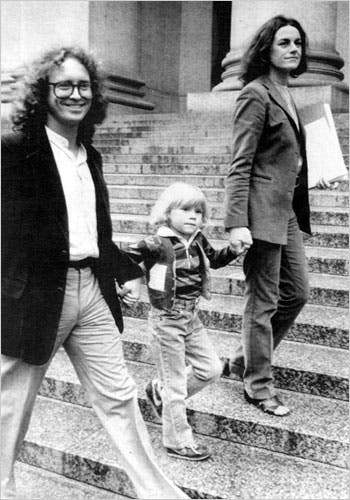
Zayd Dohrn is the son of what is arguably the “First Family of America’s Far Left.” His parents, Bernardine Dohrn and Bill Ayers, were the so-called “domestic terrorists” who, according to then-vice-presidential candidate Sarah Palin, “palled around with Barack Obama.”
The 1977-born Zayd, who grew up underground, has grown up to be a Professor of Dramatic Writing and Director of the MFA in writing for the screen and stage at Northwestern University. He is also a gifted playwright who has a knack for dramatizing hard-hitting political themes, as in his plays Muckrakers—partially inspired by Julian Assange and WikiLeaks’ exposure of Chelsea Manning’s Iraq and Afghan war revelations—and Long Way Go Down, about the immigration debate.
Dohrn puts his talents as a dramatist to good use in the 10-part nonfiction podcast Mother Country Radicals, which chronicles the urban guerrilla warfare waged by the Weather Underground, Black Panther Party and others during the 1960s/1970s to oppose the Vietnam War, racism, and other social ills. An important recurring leitmotif of Mother Country Radicals is how parents’ militant activism impacted the revolutionaries’ children, the so-called “Weather Kids” and “Panther Cubs” of which Zayd was a charter member.

Interviewed by phone in Chicago, in this wide-ranging candid conversation, Zayd Dohrn discusses: growing up Dohrn; podcasting; Tupac Shakur; Assata Shakur; Chesa Boudin; the role of violence; PTSD; comparing the New Left and MAGA; “defunding the FBI”; if COINTELPRO agitated splits in SDS; Fonzie; the Obamas; and in between bombings, street fighting, “expropriations,” and the like, how Bernardine and Bill were at home as mom and dad; and much more.
Origin Story
COVERT ACTION MAGAZINE: How did Mother Country Radicals come about?
ZAYD DOHRN: There were really two things, a personal element and a political question I was thinking about. It all came together in 2020—the end of the Trump administration, the beginning of the pandemic. I was interested politically in how people resist authoritarian governments and what it looks like when authoritarianism seems to be rising in your country and how people come together to try to fight back against that.
So, I started thinking back to my parents’ story and simultaneously I had this personal element. My parents were getting older, my mom had just turned 80 years old and my adopted mom Kathy Boudin had cancer and was dying. I had a feeling this might be the last chance to ask them the questions I had on my mind and the last time to preserve their voices for history. They’re my parents, family members and friends, but they’re real historical figures. My mom marched with Martin Luther King and was friends with Fred Hampton and broke Timothy Leary out of prison, so I thought it was important to get these stories down on the record while I still could.
CAM: Discuss podcasts as a medium and how viable they are?
DOHRN: I think people are still trying to figure out how to make money from podcasting but they’re certainly viable because they have a huge audience. The reach of podcasts is pretty phenomenal. Hundreds of thousands of people have listened to our show… with the advent of podcasting and people having phones in their pockets and needing something to do while commuting or doing chores, people are voracious consumers of podcasts. Artistically and creatively, it’s a whole new frontier and it’s really exciting what’s going on in the world of narrative podcasts right now. The kind of stories you can tell and the ways people are experimenting in the medium. In my own project the ability to use the voices of the people you interview but also archival audio and my own voiceover narration. It really gives you a flexibility and an immersive storytelling quality that’s really exciting.
CAM: Was being a playwright helpful to you in constructing the podcast?
DOHRN: Definitely. I’m a playwright and screenwriter first and foremost, so I think in terms of dramatic storytelling. Even though Mother Country Radicals is nonfiction, it’s a documentary in a way, I thought a lot about how to tell stories in a way that is dramatically satisfying. That had character arcs and drama and pulls you along so you’d be immersed in and learn from the story at the same time. All my years I spent as a dramatic writer helped me tell the story in a way that’s exciting and compelling.
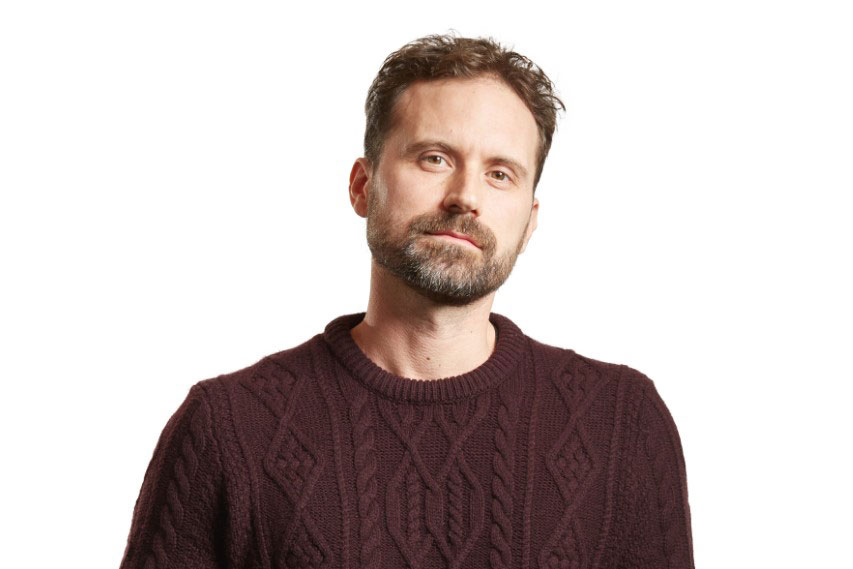
Revolutionary Genealogy
CAM: Well, you’ve succeeded. To say the least, you have quite a yarn to spin, a breathtaking story to tell. In a broad overview, what is the ten-part Mother Country Radicals about and who are the main dramatis personae?
DOHRN: It’s a helluva story, a wild yarn. Even for me, as somebody who grew up with it, I was surprised and had my mind blown several times by the twists and turns the story takes. But it’s about this group of young people, Black and white, who come together in the late ’60s to oppose the Vietnam War and police violence against Black people. Two of the main figures are my parents, Bernardine Dohrn and Bill Ayers. My mom was the head of the Students for a Democratic Society (SDS), which was the biggest student antiwar group in the country.
She started out as a small-town girl from Wisconsin, ended up in law school at the University of Chicago, a straight A student, a cheerleader and became a radical anti-racist and anti-imperialist and ended up declaring war on the U.S. as the founder and head of the Weatherman organization. She ended up being on the FBI’s ten most wanted list and J. Edgar Hoover actually called her “the most dangerous woman in America.” She was an archetype of the all-American young person who rebelled against her family and upbringing and became this radical revolutionary. She’s one of the main characters in the story and my relationship with her and what it was like to have her as my mom.
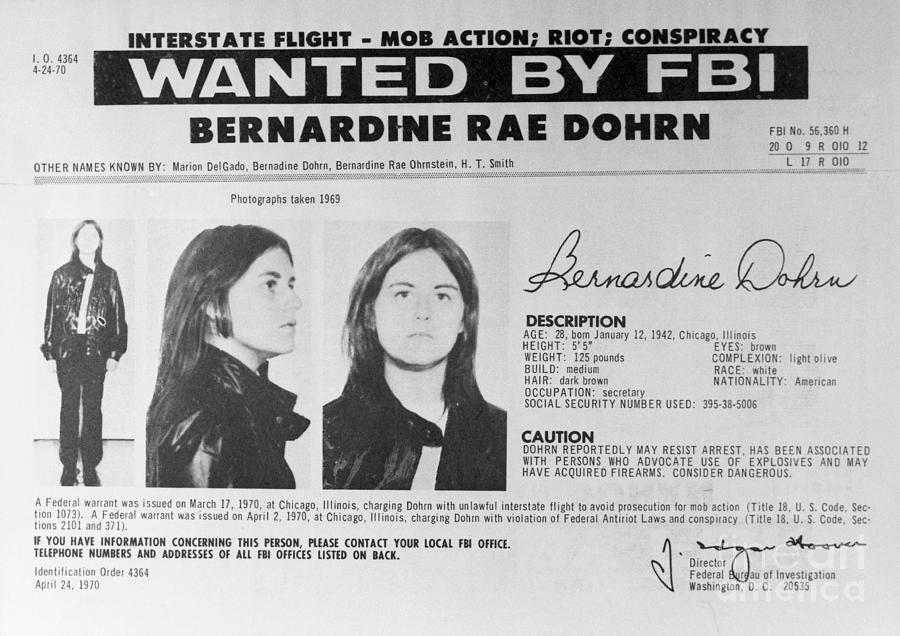
My dad, Bill Ayers, was a student at the University of Michigan, became an antiwar activist, joined the Weathermen and then joined my mom 12 years underground as fugitives from the FBI.
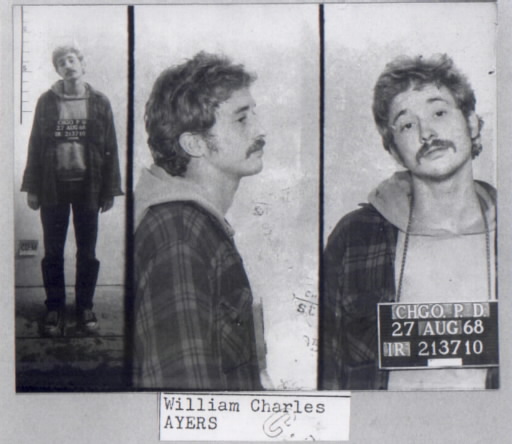
One of the things I discovered along the way is that the Weatherman, which was this white protest organization, really was deeply intertwined with and connected to certain radical Black freedom organizations: first, the Black Panthers in Chicago under Fred Hampton, and later the Black Liberation Army. I spoke to members of the Panthers and the BLA, like Jamal Joseph who was a teenager in Harlem who was radicalized when Dr. King was killed and became an underground soldier. [NOTE: Again, I believe it should be “Weathermen” (line 1)]
Assata Shakur, who was the figurehead and one of the leaders of the BLA, I spoke to her daughter, Kakuya Shakur, about her mother’s significance as a Black liberation leader. The characters are pretty incredible. Along the way, they end up robbing banks, breaking friends out of prison, fighting with police on the streets of Chicago. There’s a lot of dramatic turning points in the story, but ultimately it ends up being a story about young people who tried to fight for a better world, to oppose racism, to build solidarity between Black and white activists.
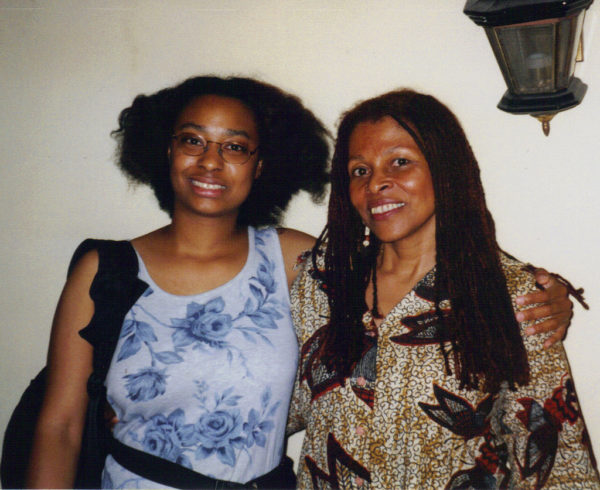
It’s also a story about children, my generation. I was born underground, on the run, so a lot of the podcast is about what it’s like growing up with revolutionaries as parents and how that changes your family, how it can cause rifts in the family and painful separations. And also, what we can all learn from the activists of that day as we try to build a better world today.
CAM: Explain to us who Chesa Boudin is, how he became part of your family and why he was recently in the news?
DOHRN: Chesa is my brother. We adopted him when he was a year-and-a-half old. His parents, Kathy Boudin and David Gilbert, were also members of the Weather Underground. They were friends and comrades of my parents. But when my parents finally turned themselves in after a decade and more on the run to the FBI, Chesa’s parents stayed underground and remained allies of the Black Liberation Army and ended up participating in an attempted bank robbery, now called the Brinks Armored Car Robbery, where they attempted to steal $1.6 million from an armored truck in upstate New York. That was a BLA action, but carried out in solidarity with several white activists, former members of the Weather Underground organization.

That robbery went terribly wrong, three people were killed, a police officer and Brinks guards, and Chesa’s parents were arrested and ended up going to prison for decades. They had left Chesa at home with a babysitter when they went out to rob a Brinks truck, so Chesa suddenly found himself without parents. My parents stepped in to adopt him. I was about four years old at the time, he was almost two, and he came to live with our family and became my brother. So, we grew up together and I think of him as close as my biological brother; he’s part of our family.
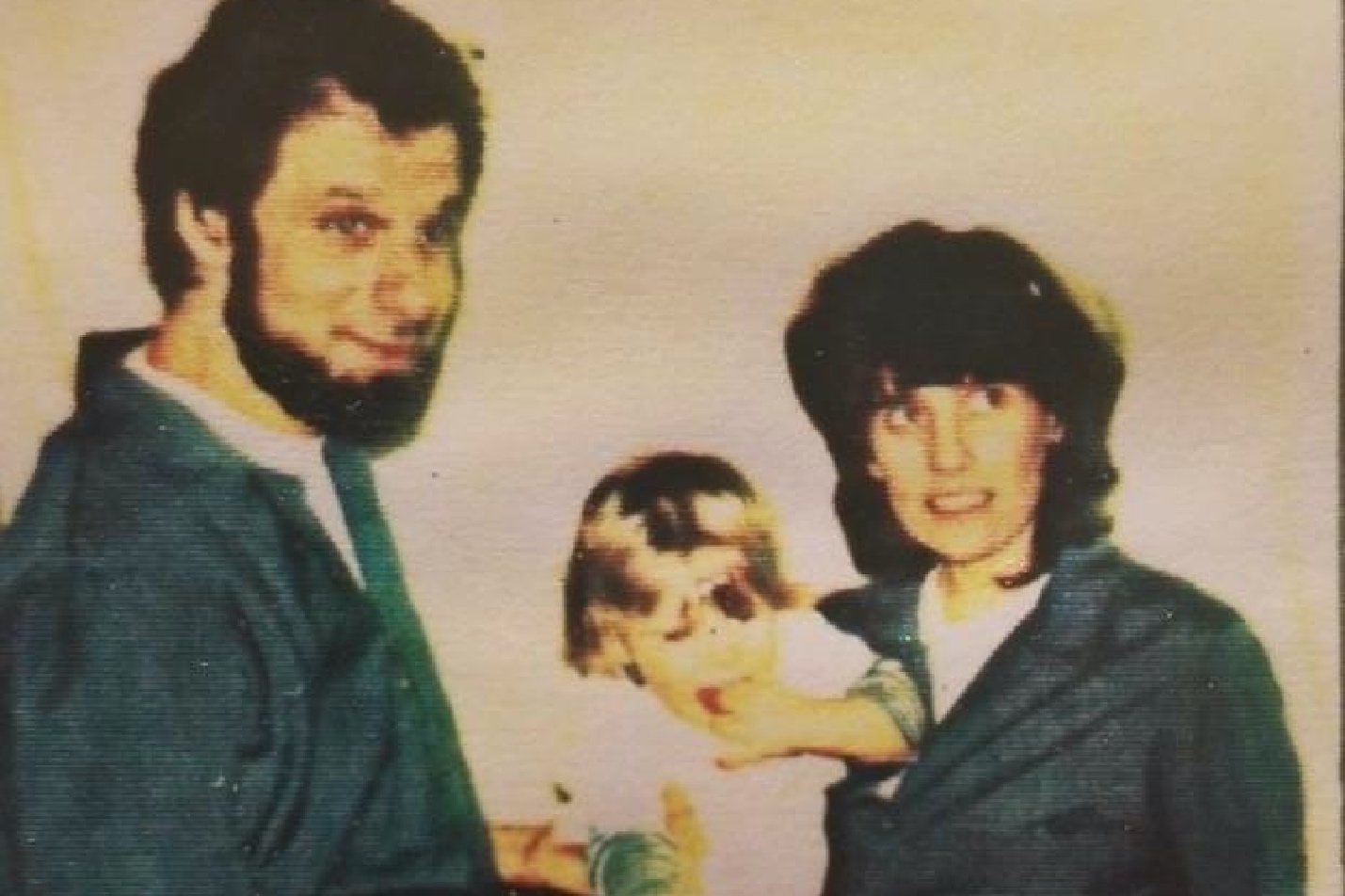
He was in the news recently because after—you can imagine, he had a very difficult childhood… he was an angry kid and went through a lot. But he turned his life around, became a very good student, went to Yale, ended up winning a Rhodes Scholarship and then going to Yale Law School and becoming a lawyer. He was, incredibly, elected District Attorney of San Francisco a year-and-a-half ago on a platform of progressive prosecution, which basically means trying to change the criminal justice system from the inside, trying to end mass incarceration and the criminalization of small nonviolent drug offenses, and things like that.
He was in the news again recently because he was recalled from office, there was a concerted effort by right-wing donors and the police union in San Francisco to undermine his office and he was essentially recalled. Chesa’s a pretty amazing person, an activist, lawyer, intellectual and there’s going to be many more chapters to his story. But he’s already had quite an extraordinary life.
CAM: Of course, his grandfather, Leonard Boudin, was a noted defense attorney for the Left.
DOHRN: Yes. Civil liberties attorney. Defended Fidel Castro’s revolutionary government and people who were blacklisted, Paul Robeson, among many others.
CAM: Genealogy is an important part of Mother Country Radicals. How does rapper Tupac Shakur tie into all of this?
DOHRN: [Laughs.] Yeah, that’s a pretty crazy connection. My parents and members of the Weather Underground came into alliance with the Black Liberation Army. Founding members of that group including Afeni Shakur, who was Tupac’s mother, and Jamal Joseph, who was Tupac’s godfather and is interviewed extensively in this podcast…Tupac came out of that world of Black liberation theory.
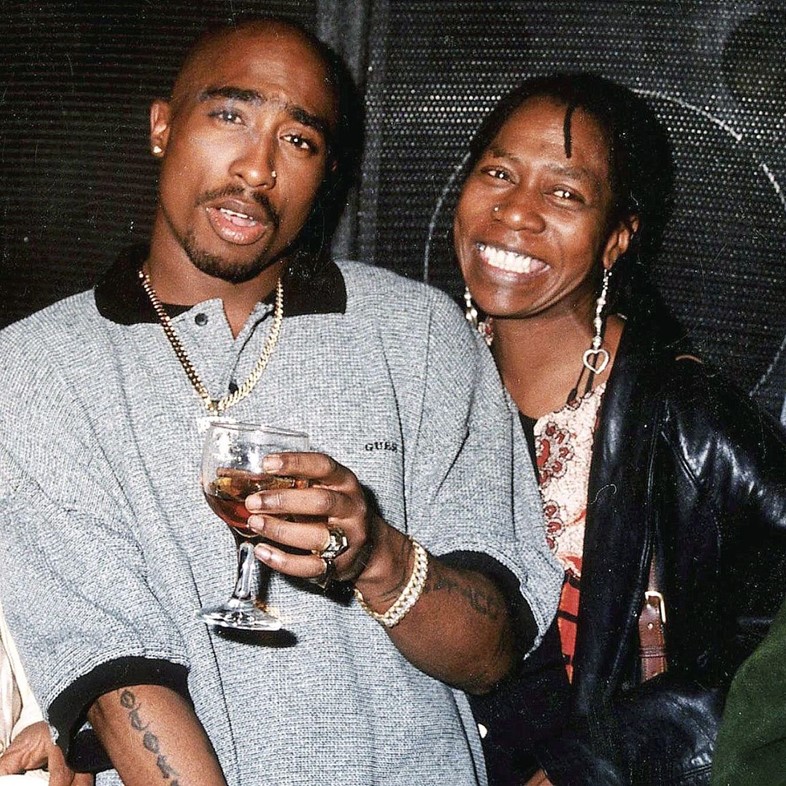
CAM: What is Tupac Shakur’s relationship to Assata Shakur?
I don’t think he has a blood relationship to Assata Shakur. Many of the BLA members took Shakur as a revolutionary name. But they were all friends and comrades in New York in the early 1970s. Jamal Joseph, who is one of the main characters in the podcast, he was good friends with Afeni and was Tupac’s godfather. Afeni herself, who was one of the Panther 21, was indicted and tried for conspiracy to kill police officers in New York and the subject of Tupac’s song “Dear Mama.”

CAM: Where is Assata Shakur nowadays?
DOHRN: She’s still underground, she’s still a fugitive…The FBI put a bounty on her head…I mention in the podcast that Donald Trump called for her to be extradited from Cuba—nobody knows where she is because she’s underground. Assata was last living in Havana as a refugee from American law enforcement. I don’t know where she is. I spoke pretty extensively to her daughter, who is based in Chicago and has her own experience growing up the daughter of a famous fugitive, which is an experience similar to mine. So, we have a lot to talk about.
CAM: I guess when Assata Shakur’s whereabouts are concerned: “Those who say, don’t know. Those who know, don’t say.”
DOHRN: [Laughs.] That’s exactly right…A lot of people feel like Assata should be allowed to come home. Assata was convicted by an all-white jury and her full story has never fully been told. She’s written an autobiography but because of the charges brought against her and that conviction, she’s never been able to speak to her own story and be back in America for many decades now.
CAM: Who were you and your biological brother Malik named after?
I was named after Zayd Shakur, who was another BLA member and was killed when he and Assata Shakur were pulled over by New Jersey state troopers. Assata was shot and arrested. My parents named me after Zayd Shakur, giving me a Black revolutionary name as a way of commemorating him and his struggle. My brother Malik was named after Malcolm X, whose full name was el-Hajj Malik el-Shabazz.
Zayd was named after a Black revolutionary. [Source: Photo courtesy of Zayd Ayers Dohrn]
The Role of Force in History
CAM: Early in Mother Country Radicals you say that the U.S. dropped 2,000 tons of bombs every day on Indochina. Much has been made of the violence of the New Left during the 1960s/1970s. But do you think if all the shootings, explosions, the Days of Rage, the prison breakouts, Attica, the New Jersey Turnpike shoot out, the Brinks Armored Car Robbery, let’s throw in the SLA actions and so on, were combined, they would have had as much firepower as a single, solitary, routine, aerial bombing mission carried out by the U.S. in Vietnam?
DOHRN: [Laughs.] That’s a leading question. You’re right to point out that – one of the things I thought a lot about while making this series is the place of violence and whether violence can ever be justified? You’re absolutely right, one thing that became very clear working on this series is that violence is very complicated and the choices people made to turn to violence. I spent lots of time on the show interrogating those choices. But you have to see it all in the light of state violence that was overwhelming and still is overwhelming. Yes, you mentioned the bombs being dropped on Indochina, and that was a huge part of it.
But also, so many of the people I spoke to for this series mentioned they were initially radicalized by the government killing Black leaders in America. Whether that was Fred Hampton, murdered by the Chicago police, or members of the Black Panthers or BLA, who were hunted down and, in many cases, killed or imprisoned by police or federal law enforcement. It was fascinating for me, because I was hearing these stories of radicalization—I learned about this 10-year-old boy, Clifford Glover, who was killed by an undercover cop in New York in 1974, radicalized a whole generation of Black activists.
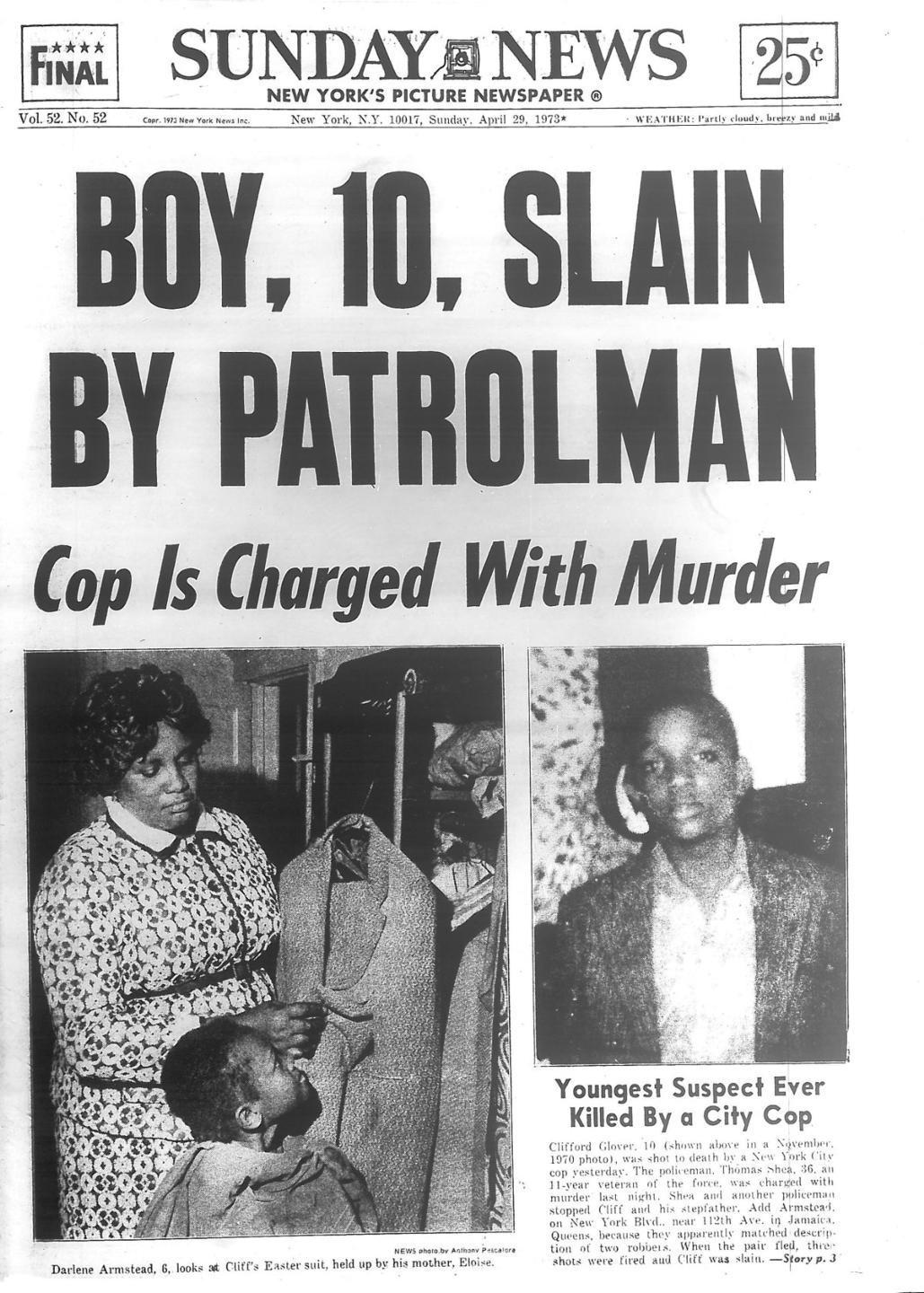
As I was having these conversations with people, George Floyd was murdered and we had this uprising on the streets of America today. I spent a lot of time thinking about how much has changed—and how little has changed. And how state violence really has a way of boomeranging back upon itself, and that the killing of Black people in America by the police is still going on and is still making radicals of young people today. It’s a huge question and it’s worth Americans spending time thinking about how much of the violence in our culture is perpetrated by our own government?
CAM: About which Dr. Martin Luther King, another victim of assassination, said: “America is the biggest purveyor of violence in the world.” Much is made about how Vietnam, Afghan and Iraq War veterans experienced PTSD. In Chapter 3 of your podcast, after the explosion of the townhouse in Greenwich Village that killed Diana Oughton, her father James talks about what he calls “an intellectual hysteria.” Do you think that one didn’t have to be on the battlefield per se to be afflicted with PTSD? Do you think that people on the home front, horrified by the terrifying news and images of an illegal, immoral, imperialist war, that for the first time was being beamed into the living rooms of Americans via their TV sets, could civilians at home also suffer from a form of PTSD?
DOHRN: That’s interesting. I hadn’t thought of it in terms of PTSD. But there’s no question that the violence going on in Vietnam and in the streets of America during the Civil Rights movement, perpetrated by police, firemen, white racists and vigilantes, was being beamed into every household in America, that constant violence, there’s no question an entire generation was driven crazy by it. We didn’t have the language, perhaps, at the time to talk about what that trauma or traumatic imagery does to people, but there’s no question that people who ordinarily would have stayed idealistic, peaceful protesters, the level of violence they were witnessing turned them into radicals and in some cases, like Diana [Oughton] or Terry [Robbins], who were really driven to actions and strategies that they probably wouldn’t have embraced under any other circumstances. The damage that was done to the American psyche, by the Vietnam War and racism is incalculable.
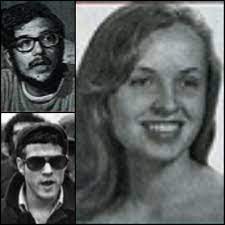
Armed and Dangerous: Comparing the New Left Underground and Today’s MAGA Extremists
CAM: In the early ’70s I read, I think it was in Playboy, that 15% of students or young people supported revolution. I remember thinking then that’s a lot. But a recent poll by the University of Chicago’s Institute of Politics found that “a majority of Americans agree that the government is ‘corrupt and rigged against everyday people like me’” and “Nearly half of Americans (49 percent) agreed that they ‘more and more feel like a stranger in my own country.’” According to the poll, “28 percent of voters, including 37 percent who have guns in their homes, agree that ‘it may be necessary at some point soon for citizens to take up arms against the government.’”
Unlike during the 1960s/1970s, the disaffection today tends to trend rightwards. But how can the Left take advantage of today’s growing alienation from and anger against the government to advance the cause of an anti-capitalist, anti-racist, anti-sexist revolution?
DOHRN: That’s a great question. I hear you about it trending rightward. Certainly, we have a huge, radicalized right wing in America right now, a nativist, authoritarian, quasi-fascist right wing enabled by Donald Trump and the MAGA movement. And it’s a dangerous, scary force in American politics. But I also think we have a radical and potentially revolutionary Left. If you see what the response was like to George Floyd’s murder and the rise of the Black Lives Matter movement and see what’s happening in the environmental movement and the struggle to fight climate change, you see lots of radical thinking happening.
One of the things I learned from lots of the radicals I spoke to for this series is that “radical” doesn’t necessarily mean that you’re using violent tactics. It’s really about an analysis and a way of looking at the world and looking at root causes… And not to tinker with this thing here or this problem there but to say some of the problems in this country are systemic and we have to look at the roots of those problems. It’s notable that it’s now a mainstream Democratic or progressive position to say that America is afflicted with systemic racism. It’s not just a couple of bad apples and we can move on with our lives, but we need to be nicer.
Actually, racism is a systemic problem. Environmental destruction is a systemic problem. Capitalism has systemic problems. The fact that many on the Left are now using that language and really trying to find solutions to problems that are really deep-seated group problems in this country is really encouraging on the Left. Our job is not to harness the irrational anger of the right wing, it’s to approach the problems systematically and to make change that’s fundamental and far-reaching.
CAM: The Weather Underground may have succeeded in detonating a bomb in the Senate bathroom, but the New Left never came close to what the MAGA forces pulled off on January 6, 2021. Were the remnants of the Radical Underground jealous?
DOHRN: [Laughs.] I don’t think they were jealous. I asked everybody I talked to about January 6 because, of course, the parallels were clear, the fact that the Weather Underground had bombed the Capitol Building. It was maybe the last direct attack on the seat of government in that way. But the people I spoke to reject the comparison. They feel they were a grassroots movement of people fighting against racism and imperialism.

The people on January 6, you have to remember, they were not revolutionaries. They were literally trying to keep a sitting president in power. They were called to the capital by the sitting president, and were encouraged and abetted by one of our two political parties. The difference is—first of all, they’re fighting for fundamentally different things. The radical Left was fighting against racism and imperialism. The radical right is fighting for racism and white supremacy and for an authoritarian vision of what America should be.
The radical Left from the 1970s was fighting the entire apparatus of law enforcement and government. The MAGA mob of January 6 was literally called there by the commander-in-chief. They were not a revolutionary movement, they were a fascist, authoritarian putsch.
CAM: From the POV of the radical Left, was storming the Capitol on January 6 a case of “right tactics, but wrong reasons”?
DOHRN: [Laughs.] I don’t even think it was right tactics, although sometimes in a revolutionary moment, maybe people storming the Capitol is appropriate. It wasn’t just a group of demonstrators storming a government building; it was about being called there by the sitting government. It wasn’t a revolutionary moment at all—if anything, it was anti-revolutionary, counterrevolutionary, it was a movement to try to impose a traditionalist vision of white supremacy and many of them were members of law enforcement and the military themselves. They’re just coming at it from entirely different points of view of what this country can and should be.
CAM: Mother Country Radicals reveals that the FBI and the Bureau’s Deputy Director Mark Felt used extralegal methods in its pursuit of your parents and other members of the Weather Underground, which spared some of them from going to prison. Do you think, like Congresswoman Marjorie Taylor Greene, that they’d support “Defund the FBI”?
DOHRN: [Laughs.] Well, the FBI for much of its history has been a deeply corrupt and authoritarian force. I don’t think progressives should have any illusions about the FBI being some kind of disinterested constitutional and legal force. Of course, Marjorie Taylor Greene only decided she wanted to defund the FBI when they started looking into the leader of her cult. We can share a distrust of American law enforcement without buying into her narrative, which is fundamentally corrupt.
CAM: In 2022 is there any common ground between the far Left and right-wing, anti-government extremists?
DOHRN: I don’t think so, quite honestly. Like anything, you can look for places to say they distrust big banks; we distrust big banks. But fundamentally, there isn’t any common ground, because what they’re fighting for is they are literally allied with white supremacy as a systemic way of running this country. They’re nativist; anti-immigrant; anti-gay; anti-woman and the progressive, radical Left is antithetical to all of those things…The Left is for the liberation of all people. On a basic level they’re fighting for two completely different visions of this country and world.
Divide and Conquer: Did a Hidden Hand Stir the Pot???
CAM: Mother Country Radicals delves into COINTELPRO, the FBI’s Counter Intelligence Program that aimed at subverting the New Left through surveillance, infiltration, agent provocateur acts and so on. Your podcast mentions the FBI asset who betrayed Fred Hampton and was also dramatized in Judas and the Black Messiah. You expose that he was involved with pursuing the Weather Underground. Consider this:
In I believe the first chapter of Mother Country Radicals you call SDS “the biggest student organization in U.S. history,” and state that at its peak, Students for a Democratic Society had 100,000 members and 350 chapters. Essentially, you then go on to say that, at the 1969 SDS convention, Bernardine and others split America’s largest student antiwar group. Mark Rudd is quoted as saying that this was “the moment the peace movement went bad.”
I don’t for a moment doubt the sincerity of your parents’ beliefs but do you think that, as part of the government’s counterinsurgency campaign, by 1969 U.S. intelligence agent provocateurs infiltrated SDS and instigated the fracturing of the peace movement? That they maneuvered extremists like Bernardine to unwittingly oppose antiwar activists who sought to end the Vietnam War through a mass movement, instead of via urban guerrilla warfare carried out by a handful of underground cadres? And in doing so, the Weather action faction split the peace movement?
DOHRN: Um, I agree with parts of that and not with parts of that. Do I believe there were agent provocateurs in SDS, as they had infiltrated the Black Panther Party? Absolutely. The FBI was working very hard to infiltrate those groups, both for surveillance and counterintelligence purposes. But no, I don’t believe the Weathermen were manipulated by FBI agents and the SDS split of 1969 was a government operation. What you had there—and you can see this in many leftist organizations and movements today, you had people who had very strong differing views and a sectarianism that developed in the organization, where people were committed to their own political analysis, their own political line.
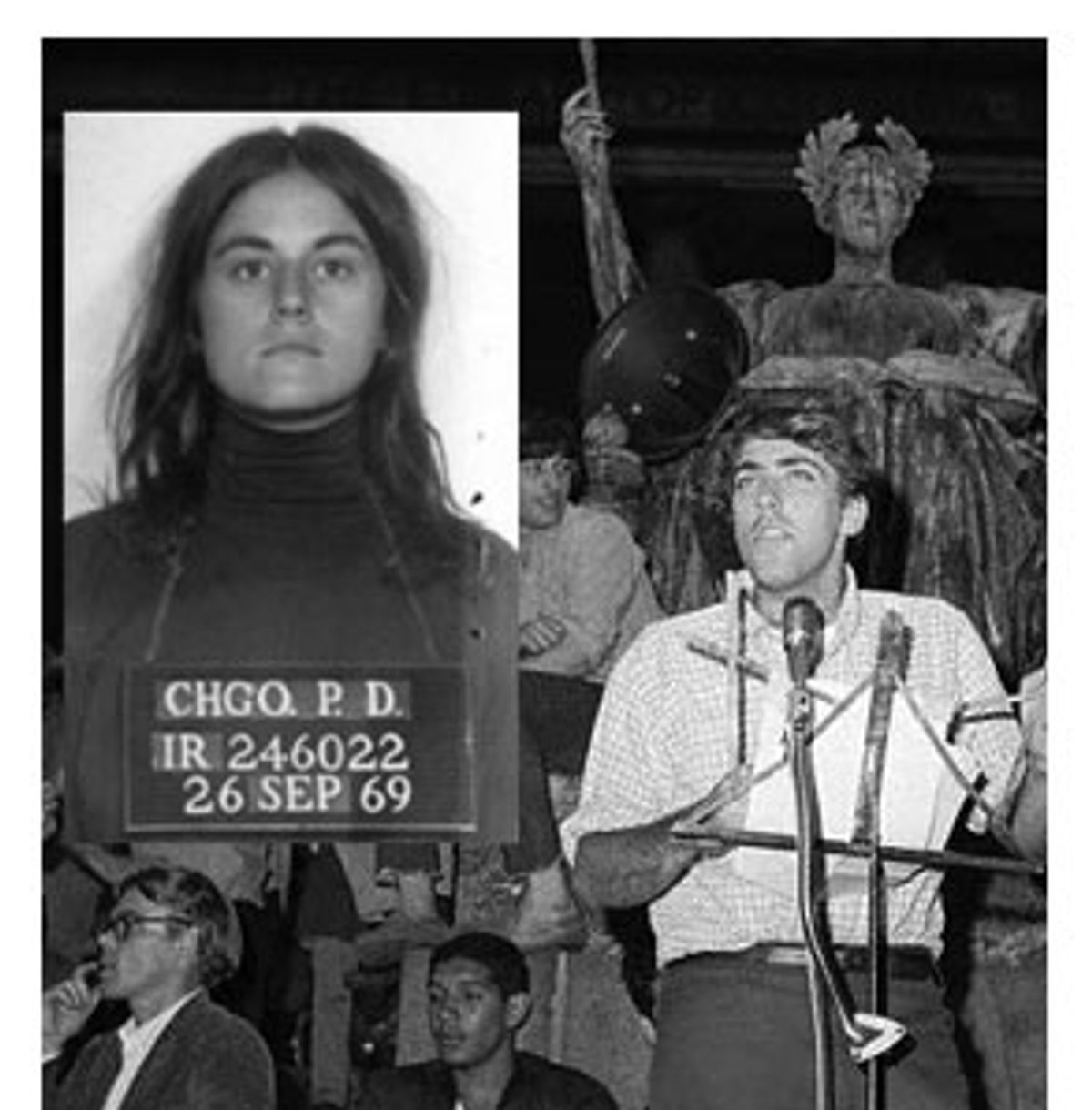
You had hard-line Marxists, people who believed in following Third World liberation movements, and those groups ended up splitting apart under government pressure on the one hand, but also of their own ideological disagreements.
Now, you can look back and say, “If only the mass movement had been allowed to proceed, everything would have been fine.” The fact of the matter is throughout history, progressive, radical, revolutionary organizations have been afflicted by this sectarianism and infighting. You can see it today. In progressive groups or the Democratic Party coalitions, where the fractures that develop can certainly be encouraged by the right, but they are also intrinsic to a mass movement that is by its definition full of constituent parts that don’t always agree on everything.
The right is always going to have more ideological consensus because it’s by its nature an authoritarian project. And the Left is trying to put together a mass movement composed of many different identity groups and factions of people who have different priorities and hopefully a diverse, pluralistic movement. Putting together that kind of movement is very hard and keeping it together is even harder. It’s absolutely fair to criticize the Weather Underground, among other groups that insisted on a certain kind of ideological purity and ended up splitting larger organizations. But I don’t think we can attribute that to a government plan. It’s pretty common in the history of the Left that groups that try to unify a mass movement often end up splitting apart over questions of tactics, priorities and how to move forward.
CAM: I’ve never seen anybody so sectarian and fractious as people who espouse: “Workers of the world, unite!”
DOHRN: [Laughs.] Exactly, exactly. All the way back to the Bolshevik Revolution, you immediately have groups within those coalitions who insist we have to follow Trotskyism or we have to follow Stalinism. There’s always going to be splits in those groups. The task of progressives, radicals and revolutionaries is to work against that force of factionalism and build a bigger bench for radical change.
CAM: And in the 19th century Marx and Engels expelled the anarchists from the International.
DOHRN: Exactly, exactly.
Telling Radical Stories in Radical Ways
CAM: Have you ever seen the 1975 made-for-TV movie by Jeremy Kagan, called Katherine, wherein Henry Winkler, the Fonz, plays a composite character based in part on your dad?
DOHRN: I’ve heard of it but I’ve never seen it.
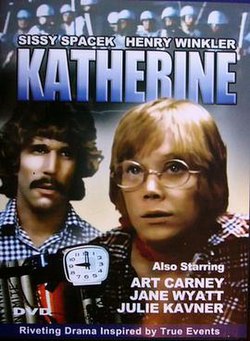
CAM: It’s the best commercially made movie I’m aware of about the New Left that’s ever been made.
DOHRN: I should definitely watch it.
CAM: You have to see it. Sissy Spacek as Diana Oughton, Art Carney as her father and Fonzie as your dad.
DOHRN: [Laughs.] I’ve gotta see it.
CAM: Did you see Aaron Sorkin’s 2020 The Trial of the Chicago 7?
DOHRN: It missed some very important things about the history…There were some very funny and ridiculous omissions. As I mention in the podcast, my mom, Bernardine Dohrn, who was a national secretary of SDS, which was one of the three leaders of the group, is portrayed in that film as an actual secretary answering the phones. Which is the furthest thing from what she was, and an unfair dismissal of an important female leader of the New Left. Also focusing on the imaginary lawyer, the law enforcement person who gets his eyes opened by the trial, misses a chance to tell a radical story in a radical way. But everybody’s entitled to their version of history; I think I’d tell it differently.
“Palling Around with Domestic Terrorists”
CAM: At the beginning of your podcast, you mention the Obamas, but I think they’re never mentioned again in the rest of the series. What exactly has been the relationship between the Obamas and your parents?
DOHRN: It’s well known that then-State Senator Barack Obama held one of his first fundraisers in our living room. What people maybe don’t understand, who just saw the headlines and soundbites during the 2008 election, is that Obama was our state senator in Hyde Park, Chicago. He was a politician, a very good politician, he knew everybody in the neighborhood. My parents at the time were very prominent progressive activists. My dad, as a school reformer and my mom as a freedom and justice advocate.
They knew Obama like a lot of people did, working on issues important to the city of Chicago. He was our state senator. They ended up serving on the board of a nonprofit together, working together on various causes. But first Hillary Clinton, then Sarah Palin and the John McCain campaign, made it this caricature of “Barack Obama pals around with terrorists.” By that point, my father had turned himself in decades earlier, he’d gotten a Ph.D., he’d become a professor at the University of Illinois at Chicago, he was a prominent citizen—in fact, he was given the Citizen of the Year Award by Mayor Richard M. Daley [whose father, the infamous Mayor Daley, Bill Ayers had fought against during 1969’s “Days of Rage”].
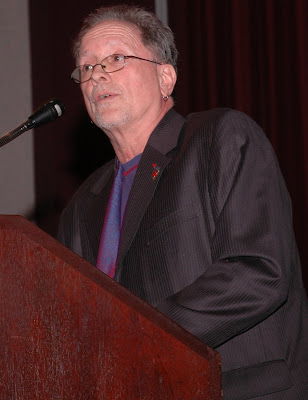
In a way that whole story was made up to tar Obama with a kind of radicalism that he doesn’t really possess. Say what you want about Obama, but he was not a radical—he was a mainstream progressive politician. Their relationship was made into this caricature, but in fact it was a pretty innocuous, normal relationship.
CAM: Is there going to be a sequel to Mother Country Radicals?
DOHRN: Yeah, Crooked Media, a big liberal-progressive podcasting group which does “Pod Save America” and produced Mother Country Radicals, has asked us to do a second season. This is their first foray into radical politics and they have been great partners, empowering us to tell the story we thought was important.
CAM: Is there anything you’d like to add?
DOHRN: Those were great questions. If people listen to the show, it’s a wild ride, a pretty incredible story and people who don’t know anything about the story will have their minds blown by a part of American history they may really be surprised by. And people who know the story will learn some things they didn’t know. I certainly learned some things writing it I’d never known before. I hope today’s generation of activists can learn from the mistakes of those radicals and what was inspirational and courageous about what they tried to do.
CAM: Knowing you a bit from your visits to L.A. to present your plays, the most remarkable thing about Bill and Bernardine is that they were good parents.
DOHRN: They were very good parents. It is a remarkable thing to be raised by fugitives who were simultaneously fighting a war against their own government. I was pretty lucky; they were very devoted and loving parents.
CAM: What’s next for Zayd Dohrn?
DOHRN: [Laughs.] I’m a writer, so I’m writing a lot of different things. I’m developing a television series and the second season of Mother Country Radicals. I have a new play I’m working on. I’m juggling different projects and trying to tell interesting stories.
For more info on Mother Country Radicals, see https://crooked.com/podcast-series/mother-country-radicals.

CovertAction Magazine is made possible by subscriptions, orders and donations from readers like you.
Blow the Whistle on U.S. Imperialism
Click the whistle and donate
When you donate to CovertAction Magazine, you are supporting investigative journalism. Your contributions go directly to supporting the development, production, editing, and dissemination of the Magazine.
CovertAction Magazine does not receive corporate or government sponsorship. Yet, we hold a steadfast commitment to providing compensation for writers, editorial and technical support. Your support helps facilitate this compensation as well as increase the caliber of this work.
Please make a donation by clicking on the donate logo above and enter the amount and your credit or debit card information.
CovertAction Institute, Inc. (CAI) is a 501(c)(3) non-profit organization and your gift is tax-deductible for federal income purposes. CAI’s tax-exempt ID number is 87-2461683.
We sincerely thank you for your support.
Disclaimer: The contents of this article are the sole responsibility of the author(s). CovertAction Institute, Inc. (CAI), including its Board of Directors (BD), Editorial Board (EB), Advisory Board (AB), staff, volunteers and its projects (including CovertAction Magazine) are not responsible for any inaccurate or incorrect statement in this article. This article also does not necessarily represent the views the BD, the EB, the AB, staff, volunteers, or any members of its projects.
Differing viewpoints: CAM publishes articles with differing viewpoints in an effort to nurture vibrant debate and thoughtful critical analysis. Feel free to comment on the articles in the comment section and/or send your letters to the Editors, which we will publish in the Letters column.
Copyrighted Material: This web site may contain copyrighted material the use of which has not always been specifically authorized by the copyright owner. As a not-for-profit charitable organization incorporated in the State of New York, we are making such material available in an effort to advance the understanding of humanity’s problems and hopefully to help find solutions for those problems. We believe this constitutes a ‘fair use’ of any such copyrighted material as provided for in section 107 of the US Copyright Law. You can read more about ‘fair use’ and US Copyright Law at the Legal Information Institute of Cornell Law School.
Republishing: CovertAction Magazine (CAM) grants permission to cross-post CAM articles on not-for-profit community internet sites as long as the source is acknowledged together with a hyperlink to the original CovertAction Magazine article. Also, kindly let us know at info@CovertActionMagazine.com. For publication of CAM articles in print or other forms including commercial internet sites, contact: info@CovertActionMagazine.com.
By using this site, you agree to these terms above.
About the Author
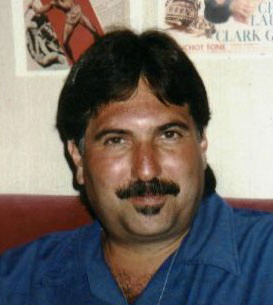
Ed Rampell is an L.A.-based film historian and critic who also reviews culture, foreign affairs and current events.
Ed can be reached at edrampel@gte.net.

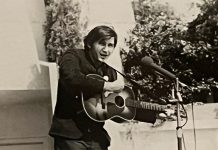

[…] Son of Weather Underground Leaders Bernardine Dohrn and Bill Ayers Knows Which Way the Wind is Blowi… […]
jan 6 a ‘govt’ operation … blaming on MAGA is a distortion
Another great review, Ed. Thanks!